Restoration of the Stuarts
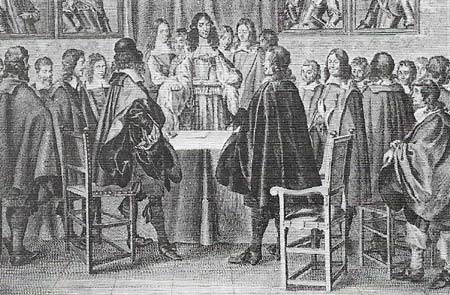
Figure 1. The Treaty of Breda (1667) ended the second Anglo-Dutch War. England thus renounced claims to the Dutch East Indies, but in return gained control of New York and New Jersey. Earlier, in 1660, Charles issued a declaration at Breda, in The Netherlands, promising a general pardon for activities during the revolution, as well as religious toleration, should he be invited back to the throne. He thus removed any obstacles to his restoration.
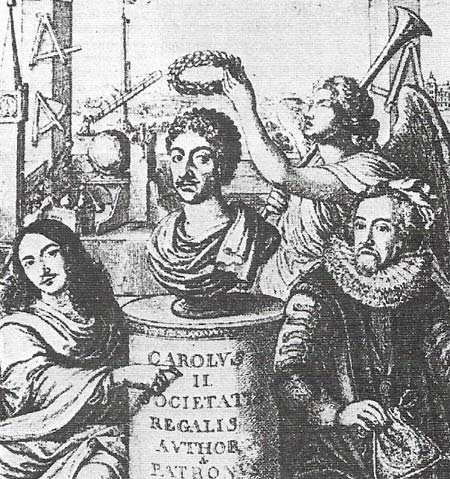
Figure 2. The Royal Society was incorporated by Charles II in 1662. At that time interest in science was fashionable. The Society’s early proceedings ranged from demography to botany, reflecting the polymathic interests of the members. The early Fellows included courtiers and dilettantes as well as men of outstanding talent such as Wren, Boyle and Newton. Above all, perhaps, the Society spread an understanding of “natural philosophy” to the ruling elite of England and thus contributed to the acceptance of the social thought of the Enlightenment and indirectly inspired the Industrial Revolution.
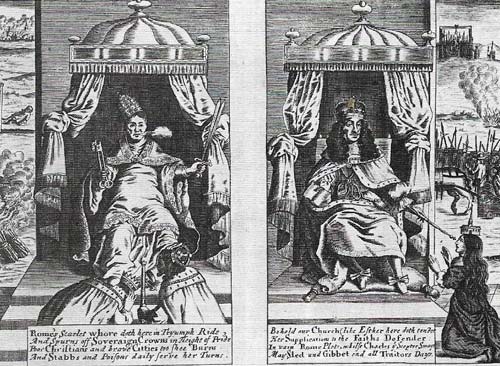
Figure 3. Fear of Catholicism during the Restoration was based on the Protestant feeling that not only was it erroneous and idolatrous theologically, but that it was a malign political force as well. It was thought that Catholic rulers, however gentle by nature, would be forced by the pope to persecute Protestants. The aggressive rule of Louis XIV in France seemed to show a clear link between Catholicism and absolutism, attacking Protestants both in his own kingdom and on the Dutch Republic. In particular the Revocation of the Edict of Nantes by Louis XIV in 1685 ended all toleration of Protestants in France. Many went into exile in England and their reports of Catholic intolerance added weight to the Protestants' fears of James II. This when James imprisoned for sedition seven bishops who refused to read his Declaration of Indulgence in May 1688 that promised toleration to the Catholics, as well as Dissenters, his attack on the Anglican Church, was seen as an attack on the rule of law.
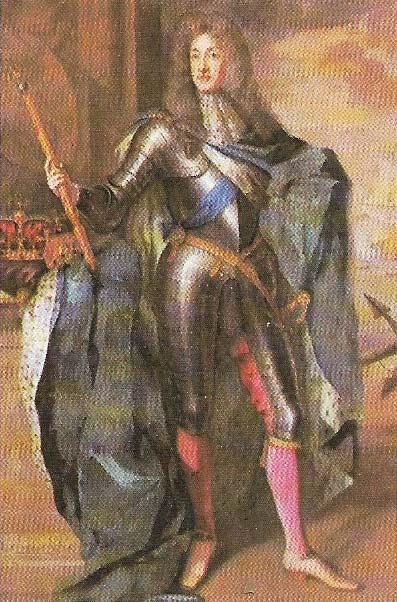
Figure 4. James II served as an able commander of the fleet during the second Anglo-Dutch War, but as a Catholic he lacked Charles's popularity, and quickly alienated all the support that he had at his accession.
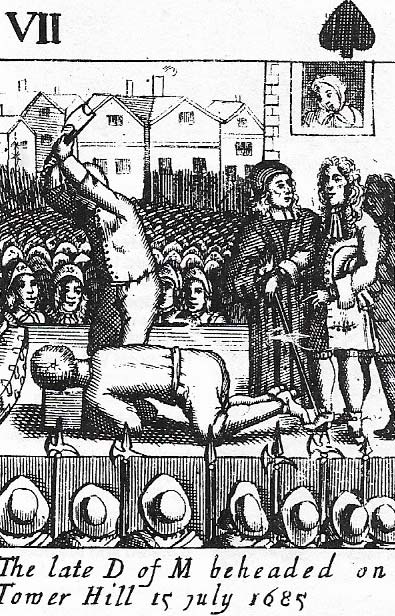
Figure 5. The Duke of Monmouth landed in Dorset in 1685 to assert his claim to the throne. He won little gentry support and was easily beaten at Sedgemoor. His followers were treated with severity by Judge Jeffreys (c. 1648–1689) in the so-called Bloody Assizes, at which 200 were hanged and 800 transported. Monmouth himself was executed.

Figure 6. William of Orange landed at Brixham late in 1688 with an army of 15,000 men. But his invasion succeeded without bloodshed (hence its name, the Glorious Revolution), as James's army commander of Marlborough, went over to William's side at the last moment, removing James's last source of support in the country.
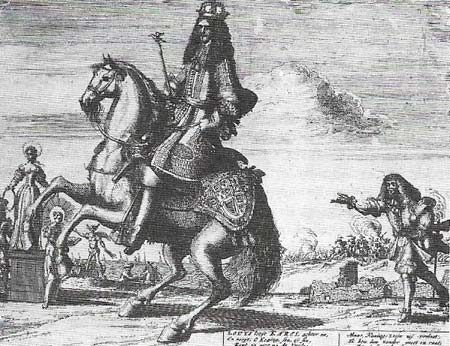
Figure 7. Charles II usually followed Louis XIV, not vice versa as in this cartoon. Except for the period 1678–1681, Charles was allied with Louis (whose Power he envied) or was benevolently neutral. Louis gave him several subsidies to help him to stay independent at home, and to resist Parliament's demands for a war against Louis, whom most Englishmen saw as the main enemy. Initially Charles sought the French alliance to avenge England's failure to win the second Anglo-Dutch War of 1665–1667.
The powers and position of the English monarchy, restored in 1660, were defined by the Convention Parliament (1660) and in the early sessions of the Cavalier Parliament (1661–1679). Both these assemblies, like Charles II (1630–1685) himself, wished to avoid the extremes of recent years. Parliament insisted on maintaining the limitations imposed on the Crown by the "constitutional revolution" of 1640–1641. The king was not granted too large a revenue, so that he would be forced to call Parliament frequently to ask for more. Thus Charles had to summon Parliament almost every year until the very end of his reign. The gentry who sat in Charles II's parliaments were quite prepared to uphold the royal authority, provided the king used it in ways they approved.
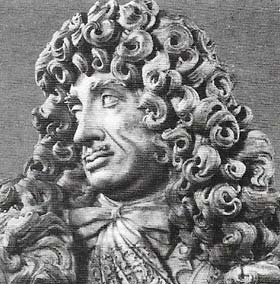 |
| Charles II, unlike his father and brother, was a charming and popular man, although reluctant to devote himself to the details of government. Temperamentally suited to absolute government, he was determined not to be exiled again; and his cynical view of human nature made him try control his ministers by playing one off against another. Much of the politics of his reign was therefore confused. This bust was made by Honore Pelle. |
The religious settlement
Charles's success as king therefore depended on his ability to keep the trust and goodwill of the House of Commons, above all by respecting the religious prejudices of the country. In the 1640s the old Church of England had been dismantled. In the resulting vacuum of religious authority new movements such as the Baptists and Quakers had grown and multiplied. The House of Commons of 1661, however, re-established the Church of England with severe laws against Protestant Nonconformists. Charles was not happy with this extremism. Apart from his personal Catholic tendencies, he was tolerant by nature. In 1660, before returning to England, he issued a declaration at Breda promising liberty to tender consciences, subject to the approval of Parliament. Parliament would not let him keep his promise, but Charles tried in 1662 and 1672 to procure greater liberty for Nonconformists.
More explosive was the problem of Catholicism, which became linked in the 1670s with questions of foreign policy. In 1670 Charles allied himself with Louis XIV (reigned 1643–1715) of France (Figure 7). In 1672 together they attacked the Protestant Dutch Republic, which was almost overrun by Louis's army. Louis was already feared as the archetype of absolutism and militant Catholicism, and Charles's alliance with him seemed doubly sinister when it became clear in the 1670s that Charles's brother James, Duke of York (1633–1701) (Figure 4), later James II, had become a Catholic. As Charles had no legitimate children, James was the heir apparent, and the prospect of the first Catholic monarch in England since Mary (reigned 1553–1558) overshadowed the politics of the last half of Charles's reign.
Opposition to Catholicism
English Protestants had long identified Catholic rulers with both absolutism and cruel persecution (Figure 3). In 1678 Titus Oates (1649–1705), a disreputable adventurer, came forward with allegations of a "Popish Plot" to assassinate Charles and make James king. Three times between 1679 and 1681 the Commons passed bills to exclude the Duke of York from the succession, but neither the king nor the Lords would agree to them. Led by Anthony Ashley Cooper, Earl of Shaftesbury (1621–1683) the "Exclusionists" (who formed the nucleus of the embryonic Whig Party) mounted a strident campaign of petitions, propaganda, and demonstrations. Echoes of the Civil War agitations worried the more conservative opponents of Exclusion (who became known as Tories). They rallied to the king and helped Charles survive the exclusion crisis, permitting the peaceful accession of James II in 1685.
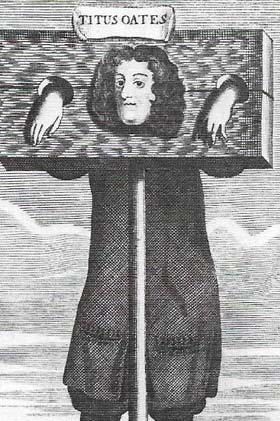 |
Titus Oates, the main witness on the Popish Plot, had spent a year as a Jesuit novice and the stories that he told were based on the information he collected at various seminaries. Despite inconsistencies, he spoke so compellingly that many believed him. The murder of the magistrate to whom Oates first recounted the plot appeared to conform all that he said. On 1685, however, he was convicted of perjury and flogged. The crisis allowed Shaftesbury, a former supporter of Charles who now feared his conversion to Roman Catholicism, to drum up anti-Catholic agitation and turn it against James, the Catholic heir to the throne. He died in voluntary exile in Holland. |
 |
| The Earl of Shaftesbury had been a royal minister on the 1660s and early 1670s. His organization of the Exclusionists onto a coherent parliamentary group was important for the development of political parties. |
At first all went smoothly. James easily crushed a rebellion by James, Duke of Monmouth (1649–1685) (Figure 5), an illegitimate son of Charles II and James's Protestant rival for the throne in the Exclusion crisis. But the Tories' cooperation with James soon ended. James hoped to give the Catholics religious liberty and political equality by repealing all the laws that prohibited Catholic worship and excluded Catholics from public office. The Tory Parliament of 1685 was strongly royalist but also strongly anti-Catholic. Annoyed by the Tories' hostility, James tried to persuade the Protestant dissenters to support a general toleration that would include Catholics. In 1686, despite opposition from Archbishop Sancroft (1617–1693), he set up an ecclesiastic commission that was seen as an attempt to subject the Church to his religious policies. Meanwhile he stretched his powers as Charles I had done in order to admit Catholics to places in the army, the administration and the universities.
The "Glorious Revolution"
James's nephew, William III of Orange (1650–1702), was closely interested in developments in England. Already the dominant political figure in the Dutch Republic, William had a claim to the English throne through his wife Mary, James's elder daughter, and he was eager to use England's fleet and wealth in his lifelong struggle against France. By 1688 William feared that he might be cheated of the succession, because late in 1687 it was announced that James's queen was pregnant. By the time James's son was born, in June 1688, William had decided to invade England in response to an invitation from leading political figures. He landed with his army on 5 November (Figure 6). James fled to France and in February 1689 Parliament offered the crown jointly to William and Mary, and the rule of law, enshrining the supremacy of the landed interest over the monarch, was assured.
